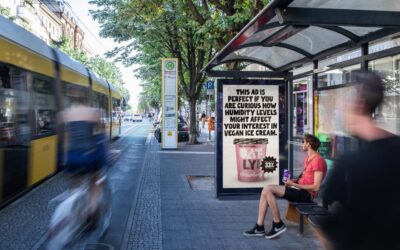The successive confinements linked to the Covid-19 pandemic have largely affected our consumption habits. The impact has been considerable, both on our purchasing preferences and on our media consumption habits. Indeed, during the first weeks of the pandemic, the affected countries recorded a decrease in digital audio consumption. However, in the days that followed, users gradually regained the pleasure of listening, mainly at home.
Since then, all studies agree to highlight the meteoric rise of this consumption by audio users. On average, this growth is estimated between +20% and 30% compared to the pre-confinement period, bringing in nearly 40% of new listeners. In addition, this listening is also more regular. According to a Sortlist study, 92% of French listeners say they are listening to audio content more regularly.
The figures are clear and the observation is without appeal: digital audio has emerged stronger from the health crisis!
Digital audio brings new benefits
As for all the traditional media that have undergone a transformation, the digitalization of audio brings new opportunities for brands. Firstly, it allows brands to move from a „one-to-many“ strategy to a „one-to-few“ mechanism. Indeed, thanks to the possibilities of targeting, it is now possible to activate the audio media with a data overlay, as has been the case historically with digital, and thus address only its core target.
In addition, new technologies and the acceleration of household equipment have also propelled digital audio onto many (new) devices. Smartphones, tablets, watches and connected televisions or even audio systems embedded directly in vehicles… are all devices capable of receiving and broadcasting digital audio streams, whether we are talking about music streaming or native podcasts. This multiplication of broadcasting devices now allows brands to address their affinity audiences through truly effective advertising scenarios, by combining listening moments with the most relevant creative messages.
Finally, digital audio remains today a media free of all forms of adblocking (software dedicated to blocking the broadcasting of advertising). By listening, the listener naturally accepts a form of compromise between the content he wants to listen to and the broadcasting of audio ads.
An obvious complementarity with other levers
In addition to these intrinsic advantages, digital audio is perfectly complementary to other media and has a place of choice in all omnichannel activation strategies.
In concrete terms, when coupled with other activations, digital audio can multiply the points of coverage and vary the ways of getting in touch with its affinity audiences. Its intimate and personal format, coupled with the warmth of the human voice, allows brands to create a unique bond with their listeners.
Finally, in support of digital plans, integrating display, online video or Digital Out-Of-Home, audio can significantly reinforce the advertising impact of a campaign. For example, for Drive-to-Store marketing objectives, digital audio provides considerable support to other levers in generating incremental visits. This contribution is increased when it is activated in a personalized way, taking into account, for example, the geographical position of the listener or the temporality of the listening, with the diffusion of personalized messages.
Measurable advertising effectiveness
In addition to a more granular monitoring of broadcast performance, digital audio also brings new measurement possibilities for brands. Indeed, thanks to the ability to identify the profiles that have been exposed to an audio campaign, it is also possible to effectively quantify the direct impact of a campaign on items related to Brand Lift.
To do this, it is necessary to implement „new generation“ protocols based on the design and administration of digital questionnaires to listeners exposed to an audio campaign. The results are then compared to a control group, with similar socio-demographic characteristics, but with the particularity of not having been subjected to the audio ad in question. Post-processing, this mechanism makes it possible to compare the results and deduce the precise impact of the campaign on the items previously listed.



